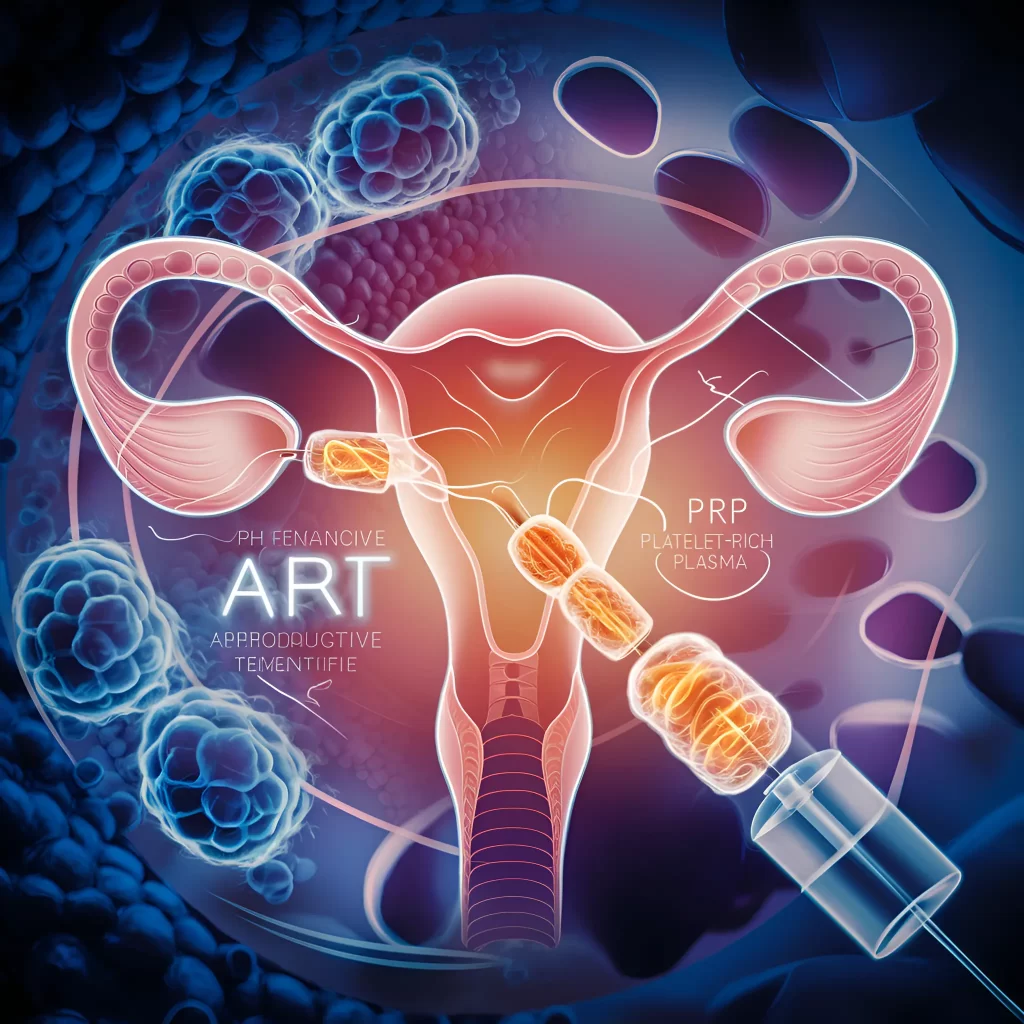
Boosting Endometrial Health in ART: The Role of PRP and Cell Injections
In the world of assisted reproductive technology (ART), optimizing every facet of the reproductive process to increase the chances of successful pregnancy is a primary goal. One critical aspect that often demands attention is the health of the endometrium – the mucous membrane lining the uterus. Recent advancements in this field are shedding light on two promising treatments: Platelet-Rich Plasma (PRP) and cell injections. This article delves into the potential these treatments hold for enhancing endometrial health and improving outcomes in ART.
Understanding Endometrial Health
The endometrium plays a crucial role in the implantation and development of an embryo. Its health and thickness are vital for ensuring that embryos successfully attach and grow. However, several conditions can impair endometrial health, including:
- Thin Endometrium: An endometrium that is less than 7-8mm thick around the time of embryo transfer is often considered suboptimal.
- Chronic Endometritis: Persistent inflammation of the endometrium due to infection or other causes.
- Asherman’s Syndrome: Scar tissue or adhesions in the uterus that can diminish endometrial function.
- Other systemic and local factors affecting endometrial receptivity.
Understanding and addressing these issues are pivotal for those undergoing ART. This is where PRP and cell injection therapies come into play as novel and promising approaches to boost endometrial health.
Platelet-Rich Plasma (PRP) Injections
What is PRP?
Platelet-Rich Plasma (PRP) is a concentration of platelets derived from the patient’s own blood. These platelets contain growth factors that are crucial for healing and regenerative processes.
Mechanism:
The growth factors within PRP can help to:
- Promote angiogenesis: Formation of new blood vessels which enhances tissue regeneration.
- Stimulate cell proliferation: Increased cell growth facilitating tissue repair and regeneration.
- Reduce inflammation: Lowering inflammatory markers can create a more favorable environment for embryo implantation.
PRP in Endometrial Health
When administered into the endometrial cavity, PRP can help tackle issues like thin endometrium and chronic endometritis. Several studies have shown promising results:
- Thickness Enhancement: A significant increase in endometrial thickness in patients with thin endometrium has been reported.
- Improved Pregnancy Rates: Increased clinical pregnancy rates in those who had previously failed to conceive due to poor endometrial health.
- Reduced Inflammation: Alleviation of chronic inflammatory conditions leading to a healthier endometrium.
Cell Injections for Endometrial Regeneration
Types of Cells Used
Several cell-based therapies are currently being explored to improve endometrial health, including:
- Mesenchymal Stem Cells (MSCs): Derived from bone marrow, adipose tissue, or umbilical cord, these cells have regenerative properties.
- Endometrial Stem/Progenitor Cells: Derived from menstrual blood, these cells can regenerate endometrial tissues.
- Platelet-Derived Cells: Cells from PRP that carry growth factors aiding in tissue regeneration.
How Cell Injections Work
The mechanism behind cell injections includes:
- Tissue Regeneration: Cells differentiate into endometrial cells and replace damaged tissue.
- Anti-inflammatory Effects: Reduction of inflammatory markers that can inhibit successful implantation.
- Improved Blood Supply: Enhancing angiogenesis which provides a better blood supply to the endometrial lining.
Clinical Evidence
Research into cell-based therapies is expanding, and early clinical evidence is encouraging:
- Enhancement of Endometrial Thickness: Notable improvement in patients with a history of thin endometrium.
- Better Implantation Rates: Increased successful implantation in ART cycles among those who received cell-based treatments.
- Minimization of Adhesions: Reduction in the formation of scar tissue and adhesions improving overall endometrial function.
Comparing PRP and Cell Injections
Both PRP and cell injections offer unique advantages:
- PRP: Quick preparation from the patient’s own blood, minimal side effects, and cost-effective.
- Cell Injections: Promises a more robust regenerative potential but may involve complex preparation and higher costs.
Combining these treatments might also be possible, potentially providing synergistic effects that could lead to better outcomes in endometrial health and ART success.
Future Prospects
As research progresses, the application of PRP and cell injections in ART is likely to expand. Potential future directions include:
- Refinement of Protocols: Better standardization and optimization of injection protocols.
- Combination Therapies: Usage in conjunction with hormonal therapies or other ART protocols.
- Personalized Medicine: Tailoring therapies based on individual patient profiles for enhanced effectiveness.
Conclusion
Optimizing endometrial health is fundamental to improving success rates in ART. Both PRP and cell injections are emerging as promising treatments to address various endometrial challenges. With ongoing research and clinical trials, these innovative therapies hold the potential to significantly enhance the effectiveness of ART and help more individuals achieve their dreams of parenthood.
Incorporating these advancements into mainstream reproductive medicine could revolutionize the approach to treating endometrial health issues, creating more effective and personalized treatments. Keep an eye on this evolving field as science continues to uncover the full potential of PRP and cell injections in enhancing fertility and reproductive success.